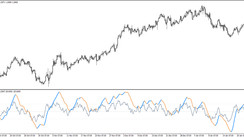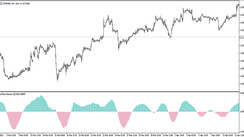Grasping the Concept of Algorithmic Trading
In the modern financial world, algorithmic trading has emerged as a revolutionary way of making informed and automated investment decisions. At the convergence of technology and investment strategy, algorithmic trading entrusts an algorithm - a set of predefined instructions - with the autonomy to make trading decisions. Traders, thus, transfer their investment capital under the surveillance of their chosen trading software.
In this realm, the significance of selecting the right trading software cannot be overstated. This software forms the backbone of all trading operations, embodying the very algorithms that will drive trade decisions. These systems are expected to display a high level of precision, quickly processing market data and accurately executing trade orders.
However, not all trading software is created equal. Some may lack crucial features, while others may simply be faulty. In the high-speed world of algorithmic trading, where transactions occur in fractions of a second, even minor software glitches can result in substantial financial losses. Therefore, the choice of trading software becomes a pivotal factor in the overall trading strategy, necessitating careful selection and thorough understanding.
To comprehend the importance of algorithmic trading and the software it relies on, let's take a closer look at the essence of algorithms themselves.
Understanding Algorithms
Algorithms are omnipresent in our daily life, yet they often remain invisible, quietly operating behind our digital screens. The term 'algorithm' refers to a set of instructions organized in a specific sequence, intended to perform a certain task. From an uncomplicated game like Pac-Man that requires navigating through a maze, to sophisticated spreadsheet software offering a multitude of functionalities, every computer program relies on underlying algorithms to function. Each click, each command, translates into a series of algorithmic operations that dictate the desired output.
When applied to the financial market:
- Key Point 1: Choosing the correct software is the cornerstone of an effective algorithmic trading system. The software you pick will influence your trading strategy, directly affecting your profit margins.
- Key Point 2: A trading algorithm forms the brain of your trading operation. It's a set of instructions that guide when to initiate a buy or sell order. These instructions are programmed to execute trades based on specific market conditions and financial indicators.
- Key Point 3: Faulty software can lead to substantial losses. A minor glitch in your software can disrupt your trading algorithm, potentially leading to inaccurate trade executions and financial loss.
In the following sections, we delve deeper into the intricacies of algorithmic trading and discuss the critical aspects of algorithmic trading software. We will also explore the pros and cons of purchasing ready-made software versus building your own. But for now, understanding these key points forms the first step in the exciting journey of algorithmic trading.
Exploring Algorithmic Trading
Algorithmic trading, often known as algo-trading, is a method of executing orders in the financial markets through pre-programmed trading instructions. These instructions, embedded in complex algorithms, take into account variables such as time, price, and volume to send small slices of the order out to the market over time.
One of the fundamental advantages of algorithmic trading lies in its ability to eliminate the emotional aspect of trading. Trades are initiated based on purely logical decisions, offering a level of accuracy, speed, and consistency that far surpasses the capabilities of human traders. This efficiency becomes particularly evident in volatile market situations where the speed of reaction can make the difference between a profitable trade and a missed opportunity.
In the era of fast-evolving technology, algorithmic trading is becoming increasingly popular. Its ability to execute orders at lightning-fast speed, coupled with the potential for improved accuracy, has made it an attractive choice for modern traders. This method leverages the power of technology and mathematics to make calculated, automated trades at a speed that human traders can't match.
Who Uses Algorithmic Trading Software?
The world of algorithmic trading is primarily dominated by large trading firms, including hedge funds, investment banks, and proprietary trading firms. These giants of the financial world have abundant resources at their disposal, often choosing to create their own bespoke trading software. These custom-built systems offer tailored solutions, backed up by dedicated data centers and professional support staff to ensure smooth operation.
However, algorithmic trading isn't just for financial behemoths. On an individual level, savvy proprietary traders and quantitative analysts (quants) also utilize this innovative approach. Proprietary traders, who might not be as tech-savvy, often turn to ready-made trading software to meet their algorithmic trading needs. This software could be provided by their brokers or purchased from third-party providers. Quants, on the other hand, generally possess a solid understanding of both trading and computer programming. This expertise allows them to develop their own trading software.
The entry of individual traders and smaller firms into the realm of algorithmic trading has created a vibrant, diverse market. However, it also introduces an essential decision point: Should you buy ready-made algorithmic trading software, or build your own? This question sets the stage for a deeper dive into the world of algorithmic trading software. In the following sections, we will examine the implications of this choice and delve into the key features that good trading software must possess.
Algorithmic Trading Software: To Build or Buy?
Stepping into the world of algorithmic trading presents one with an essential choice: to build custom software from scratch or to invest in a ready-made solution? This decision has significant implications, shaping not only the initial setup process but also the ongoing operation and potential adaptability of the system.
Pros and Cons of Buying and Building
- Buying: Offers immediate access but may be expensive and filled with potential loopholes.
- Building: Provides complete customization but requires significant time, effort, and advanced knowledge.
Buying Ready-Made Software
Acquiring ready-made algorithmic trading software is often seen as the most straightforward route, offering immediate access to trading capabilities. Such software typically comes with a set of standard features and predefined algorithms that can help newcomers get started quickly.
However, this ease of use can come at a price. Ready-made software can be costly to acquire and may sometimes come with loopholes that, if overlooked, could lead to losses. Additionally, the high cost of this software may eat into your potential profits from algorithmic trading. On top of the initial expense, you may also encounter limitations when it comes to customizing the software to suit your unique trading strategy or requirements.
Building Custom Software
On the other hand, building your own algorithmic trading software presents a different set of advantages and challenges. This path allows for ultimate flexibility—you are free to tailor the software to your specific needs, ensuring that every feature and function aligns with your trading strategy. However, this custom approach requires time, effort, and a deep understanding of both trading and programming.
Building your own software is no small feat. It demands a significant investment of time and resources, and even then, it may not be foolproof. The development process can be fraught with challenges, from ensuring the accuracy of algorithms to dealing with technical glitches. However, for those with the necessary expertise and patience, building custom software can provide an unparalleled level of control and adaptability.
While both options have their merits and drawbacks, the choice ultimately boils down to your individual needs, resources, and expertise. In the following sections, we'll delve into the key features that a robust algorithmic trading software should possess, regardless of whether it's bought or built.
Decoding the Features of Algorithmic Trading Software
Navigating the world of automatic trading can be risky, with high stakes that could result in substantial losses. Thus, when deciding to buy or build software, understanding the fundamental features is crucial.
Understanding Essential Features
- Real-time Market and Company Data: The software should be able to handle real-time market data and company fundamentals.
- Connectivity to Multiple Markets: The software should be capable of receiving data feeds in various formats or consider third-party data vendors like Bloomberg and Reuters that aggregate market data from multiple exchanges and deliver it in a uniform format.
- Minimizing Latency: Latency refers to the time delay in the transmission of data points from one application to another. Minimizing latency ensures that you receive the most current and accurate information without any time gap.
- Configurability and Customizability: Whether you're buying or building, your trading software should allow a high degree of customization and configurability.
- Capability to Write Custom Programs: Most trading software provides the option to write your own custom programs within it.
- Backtesting on Historical Data: Backtesting involves testing a trading strategy on historical data. Your algorithmic trading software should incorporate this mandatory feature, as well as access to historical data for backtesting.
- Integration with Trading Interface: Your software should have the necessary connectivity for trade placement, either via a broker's network or direct connectivity to the exchange.
- Platform-Independent Programming: Preference should be accorded to software that supports platform-independent languages.
Understanding the Mechanics of Trading Software
Having a deep understanding of the inner workings of your trading software is critical. This understanding ensures you know what is happening 'under the hood' of the algorithmic trading software.
Where to Start?
Ready-made trading software typically offers free limited functionality trial versions. It is crucial to fully explore these trials and read through all available documentation before purchasing anything.
The Bottom Line
Investing in algorithmic trading software can be costly and challenging, whether you're buying off-the-shelf or building your own. However, it's imperative to understand the core functionalities of your software before diving into the fast-paced world of algorithmic trading with real money.





